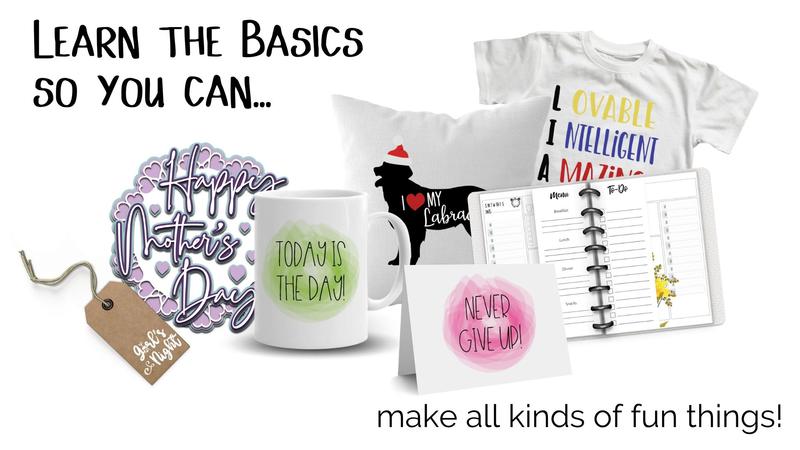Disclaimer: Please note that some of the links in this may be affiliate links. There is no additional cost to you, but The Scrap Room may earn a small commission should you choose to purchase through those links. Click here for my full disclaimer. Thank you for your support.
The Digital Crafter's
Online Course
Learn how to work with and create digital files for crafts -- plus how to use them to make handmade things!
File Format Basics
SVG, EPS, DXF, PDF, PNG, JPG...just to name a few.
There are so many different types of file formats out there, it could make your head spin! How do you know what kind of file to use for which kind of project?
Well worry not, that's where we're going to start. At the beginning. As promised, I'll keep it brief, but below, are a list of the most common types of files you'll come across in crafting, and what you'll likely use them for.
SVG, EPS, and DXF Files: These are vector based designs, meaning they are made with anchor points and connecting lines and are created mathematically, so they can be resized as big or small as you need. Depending on if you have an electronic cutting machine, and what kind it is, you'll likely use at least one of these file format on your cutting machine. In crafting, they are generally used for cutting out designs.
PDF Designs: PDF files can be left editable, or not, and are great for sharing documents with other computers and devices. Most devices and many programs are capable of reading PDF files. They are high in quality and resolution and good for printing planner pages, artwork to frame and decorate your home, and DIY stationary.
PNG Designs: PNG designs can be made on a colored or transparent background. They are capable of being a high quality image, and are made with pixels instead of anchor points and mathematical equations. They are great for printing as well as digital use. If you're using them digitally as clip art, you'll need them on a transparent background so you can overlay them onto other images and graphics. (You'll also need to use a design program that is capable of working with LAYERS such as Illustrator, Photoshop, Canva, etc.) You'll also use PNG designs for Print and Cut features on some electronic cutting machines, for sublimation art and waterslide designs, and even printed art.
JPG Images: JPG designs are photo images. They have a solid background (not on transparent), and are usually the format you'll see digital photographs in, especially when shared online in social media platforms. They are created by pixels as dpi (dots per inch) and can be edited with photo editing software. They can be great bottom layers of other digital works of art, but usually aren't good for layering on top of other things.
There are other types of files you may come across, such as trademarked file formats for specific brands of cutting machines, embroidery files (again, often specific to machines) and STL files, but I'm just covering the basic ones that you'll use in the most popular crafts and hobbies such like custom mugs, hats, toes, and tees, in digital scrapbooking, printmaking, and stationary, and basic design and photo editing.
You'll also come across the terms "RGB" (red, green blue) and "CMYK" (cyan, magenta, yellow key) throughout this course. There are different color settings that are used for different projects. Generally, you'll want to be in RGB color format if you're creating things for screen display, and CMYK for printing.
If you didn't memorize all that, that's okay! There's no test. ;) Just remember that the info's here so you can refer back to it later if needed. You can even bookmark the page in your web browser.
I'll be going over all the file formats again in more detail throughout this course, so you'll have plenty of time for it all to stick. <3

